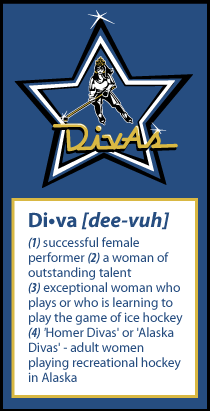To segregate by skill level or not?
This is a very important topic because it is important to the safety of your players.
Players must have some degree of edge control before they try to scrimmage. There needs to be some amount of skating competency that includes stopping, or a player could hurt herself or take out someone around her. I’ve witnessed new skaters with competitive personalities trying to skate in scrimmages. Without the ability to stop, many skaters will stiffen up and fall over backwards, with the potential of dangerously hitting their heads on the ice. Without some degree of edge control they can also lose an edge in pursuit of the puck and wipe out another player risking injury
.
We struggled with this because of the nature of our program. Growing the program for us meant welcoming all comers. My philosophy is to coach whoever shows up no matter how challenging. But we had some problems. Some Divas were not comfortable being on the ice with some novices because it was dangerous. I encouraged the novices to come to my power skating class, to forget about the puck, and learn to stop, use inside and outside edges, and gain balance. In short order we had the problem solved. But there are always new players coming into the program.
The Divas and I have spent a lot of time getting the skill division formula right. It evolves and changes with the abilities and depth of your program. If you can, divide by skill level, so everyone is challenged and everyone can succeed. But that isn’t always possible. You will need to work with your team to decide what is best for your program. We have all levels on the ice together most nights. That is just the best use of the ice and it works fine. All levels practice together. Then when we scrimmage, the Divas get their advanced lines out together in the first shift. I will blow the whistle for a change. Then the intermediate players from each team play a shift. Then the beginner players go. This seems to work better than mixing everyone because the Divas have fast experienced players and first year skaters and everyone in between. It is not perfect but it is what we have to do.
TIP: The number one cause of frustration for women recreational hockey players is playing at an inappropriate skill level. Skilled players are frustrated by playing slow. Slow players are frustrated when they barely get to the puck and have it taken away. It is all relative but frustrating all the same. Skilled recreational players would be frustrated by playing against young comp girls. To the extent that your program can segregate players by ability for the majority of your ice times it is best. I also realize it is not always possible. When you have a wide range of talent on the ice try to use it to your advantage. Ask some of the most skilled players to help coach the beginners. Again, I realize that this isn’t necessarily what the top players want to get out of their time on the ice. They want to play, learn and have fun too.


